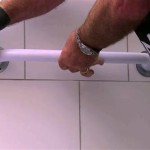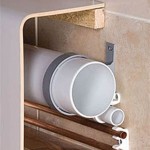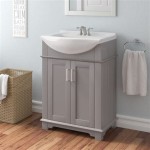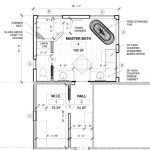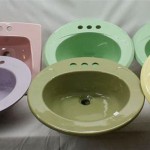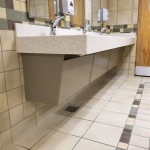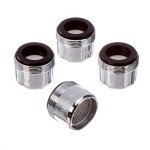How To Hide Pipes In A Bathroom
Exposed pipes in a bathroom can detract from the overall aesthetic. Fortunately, several methods exist to conceal these pipes, ranging from simple DIY projects to more involved renovations. Choosing the right method depends on the pipes' location, the bathroom's layout, and the desired level of finish.
One of the most common methods for concealing pipes is boxing them in. This involves building a frame around the pipes using timber or metal studs and covering it with a material like plasterboard. This creates a clean, finished look and provides a surface that can be tiled or painted to match the bathroom decor. Boxing in is particularly effective for concealing vertical pipes or larger pipe configurations.
When boxing in pipes, it's crucial to ensure access for maintenance. An access panel can be incorporated into the design, allowing easy access to valves and fittings without dismantling the entire structure. This panel can be discreetly integrated and virtually invisible when closed.
Another popular technique is using pipe cladding. Pipe cladding typically consists of PVC or plastic covers that snap or clip around the pipes. These covers offer a quick and easy solution for concealing exposed pipes and are available in various colors and finishes to match existing bathroom fixtures. Pipe cladding is particularly useful for smaller, individual pipes and is relatively inexpensive compared to other methods.
For a more decorative approach, consider using furniture or built-in units. A vanity unit strategically placed can hide pipes running along the wall beneath the sink. Similarly, tall storage cabinets can conceal vertical pipes. This method offers both practical storage and a visually appealing way to disguise unsightly plumbing.
Recessed shelving can also be used to cleverly conceal pipes. By building shelves around the pipes and incorporating them into the bathroom design, the pipes become integrated into the wall structure, appearing as if they were never there. This method is particularly effective for smaller pipes and can add a stylish touch to the bathroom.
In some cases, rerouting the pipes may be a viable option. While this is a more involved process requiring professional plumbing expertise, it can provide a permanent solution to unsightly pipework. Rerouting can involve moving the pipes within the walls or floor to a less visible location. This method is typically considered during a bathroom renovation.
False walls offer another effective method for concealing pipes, particularly in larger bathrooms. Building a false wall a few inches in front of the existing wall creates a cavity where the pipes can be hidden. This provides a clean, uninterrupted surface and can also improve the overall insulation of the bathroom. However, this approach will slightly reduce the bathroom's floor space.
When choosing a method for concealing bathroom pipes, consider the material's durability and resistance to moisture. Bathrooms are inherently humid environments, so materials used for pipe concealment should be able to withstand these conditions without warping, rotting, or deteriorating. Moisture-resistant plasterboard, treated timber, and PVC are good choices for bathroom applications.
Proper ventilation is also crucial when concealing pipes. Enclosed spaces can trap moisture, potentially leading to mold and mildew growth. Ensure adequate ventilation around concealed pipes by incorporating vents or leaving small gaps for air circulation. This helps maintain a healthy bathroom environment and prevents damage to the concealed pipework.
Before undertaking any pipe concealment project, it's advisable to consult with a qualified plumber. They can assess the feasibility of different methods, advise on the best approach for your specific situation, and ensure compliance with building codes and regulations. A plumber can also identify any potential issues with the existing plumbing before concealment, preventing future problems.
Careful planning and execution are essential for successfully concealing bathroom pipes. Consider the overall bathroom design, the location and size of the pipes, and the chosen concealment method's long-term maintenance requirements. By taking these factors into account, it’s possible to create a stylish and functional bathroom free from unsightly exposed pipes.
Paint can be a surprisingly effective tool for camouflaging exposed pipes. By painting the pipes the same color as the surrounding walls or fixtures, they can blend seamlessly into the background, becoming less noticeable. This is a simple and cost-effective solution for smaller, less obtrusive pipes.
Utilizing the space behind the toilet can also help conceal pipes. A purpose-built unit designed to fit around the toilet cistern can hide plumbing connections and provide additional storage. These units are commercially available and come in various styles and finishes to match existing bathroom decor.
For a truly seamless look, consider integrating the pipe concealment into the overall bathroom design. For example, a boxed-in section of pipes could be designed to double as a shelf or a built-in niche. This not only hides the pipes but also adds a functional element to the bathroom.
How To Hide Plumbing In Your Bathroom Victoriaplum Com
An Interview With A Master Plumber And 3 Creative Ways To Hide Exposed Pipes Nir Plumbing
Creative Ways To Hide Exposed Plumbing Pipework Mayne Gas Heating
How To Cover Pipes In A Bathroom Dans Le Lakehouse
Boxing In Bathroom Pipework Guru
Discover These 5 Methods To Hide Ugly Hdb Bathroom Kitchen Aircon Pipes Style Degree
Help Hiding Pipes In Downstairs Toilet Houzz
How To Hide Pipes On A Small Floating Si Bunnings Work Community
How To Cover Pipes In A Bathroom Dans Le Lakehouse
Pin On House Martin
Related Posts
